Research Highlights
-
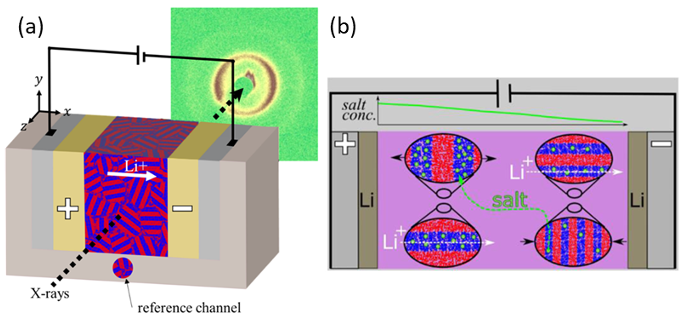
Ion Transport in Block Copolymer Electrolyte Affected by Distortion of Lamellae Domains under DC Polarization
We studied the structure of block copolymer electrolyte using small-angle X-ray scattering (SAXS) during direct current (dc) polarization and observed the distortion of the lamellae domain spacing d to accommodate the salt concentration gradient. Read More
-

Simultaneously Enhancing the Redox Potential and Stability of Multi-Redox Organic Catholytes by Incorporating Cyclopropenium Substituents
High redox potential, two-electron organic catholytes for non-aqueous redox flow batteries were developed by appending diaminocyclopropenium (DAC) substituents to phenazine and phenothiazine cores. Read More
-
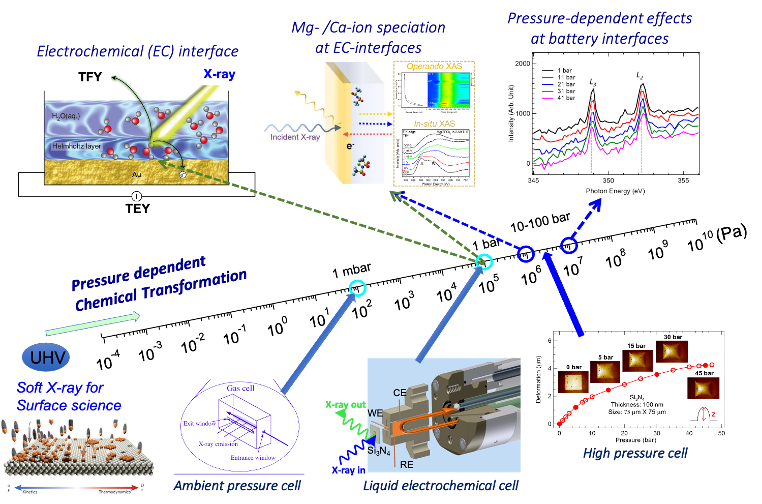
In situ/operando soft x-ray spectroscopy of chemical interfaces in gas and liquid environments
In situ/operando soft x-ray spectroscopy characterizations of interfacial phenomena reveal the mechanism of charge transfer and chemical transformations of solid/gas and solid/liquid interfaces of energy storage and catalytic materials in realistic environments. The unique design of the instrumentation, the fabrication principle and examples of experiments are presented. Read More
-
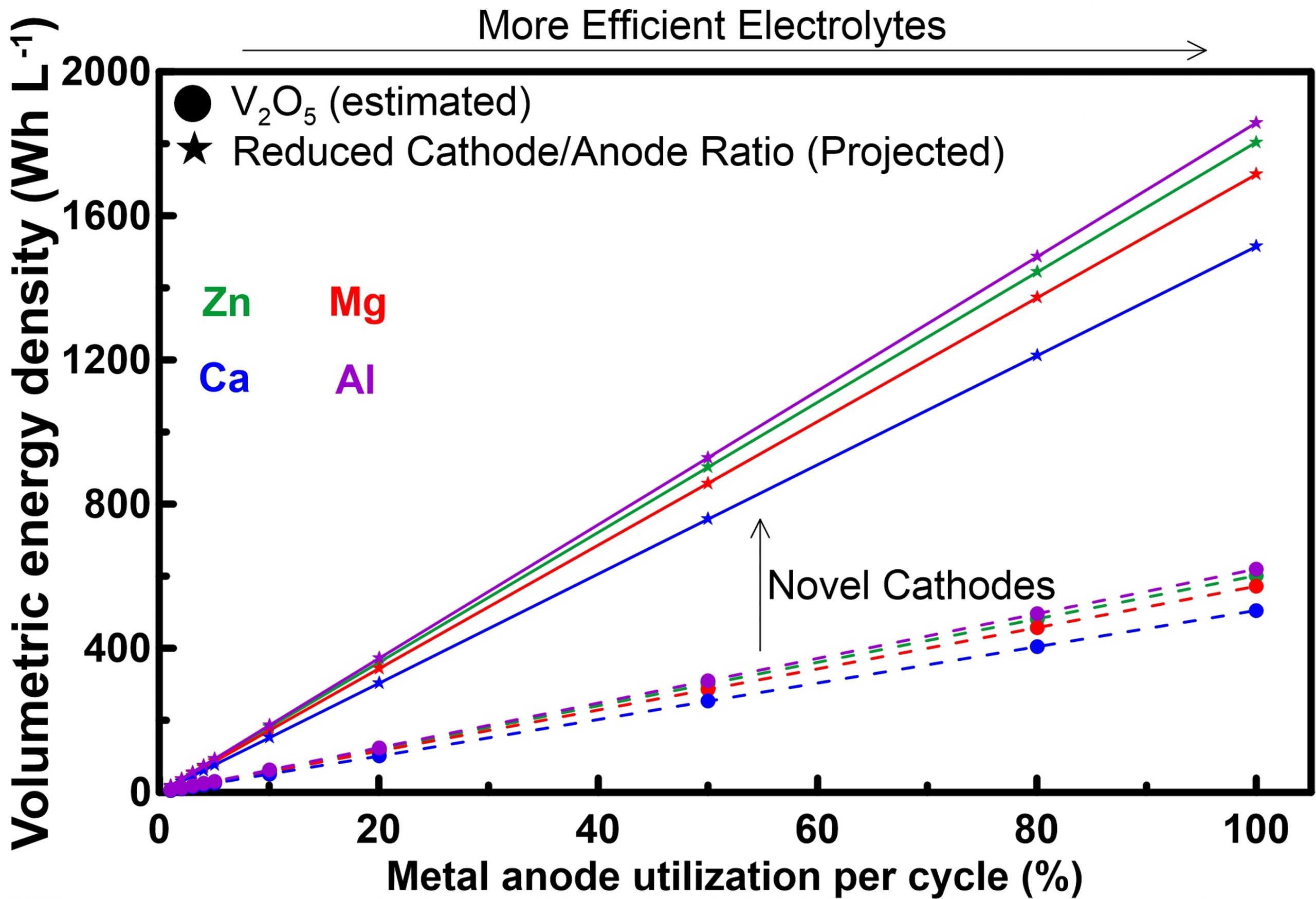
The Mystery and Promise of Multivalent Metal-ion Batteries
In this perspective, we highlight some of the recent progress and uncertainty in elucidating capacity contributions and accompanying mechanisms for different charge carriers. We then discuss cell balancing and increasing metal anode utilization as major remaining challenges, and propose design strategies and future directions for realizing practical MV metal-ion batteries. Read More
-
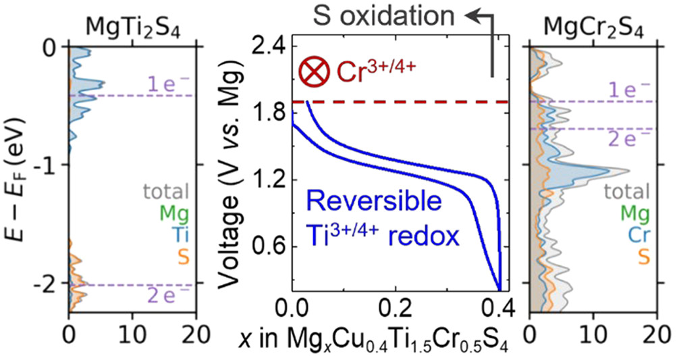
Toward the Development of a High-VoltageMg Cathode Using a Chromium Sulfide Host
The electrochemical behavior of MgM2S4 (M = Ti, Cr) thiospinels was investigated experimentally and their redox activity was understood through analysis of the computed electronic density of states. Read More
-

Operando X-ray Diffraction Studies of the Mg-Ion Migration Mechanisms in Spinel Cathodes
The Mg-ion migration mechanisms in MgMnCrO4 spinel cathode was investigated experimentally through operando x-ray diffraction revealing a complex mechanism during Mg insertion/extraction. Read More
-
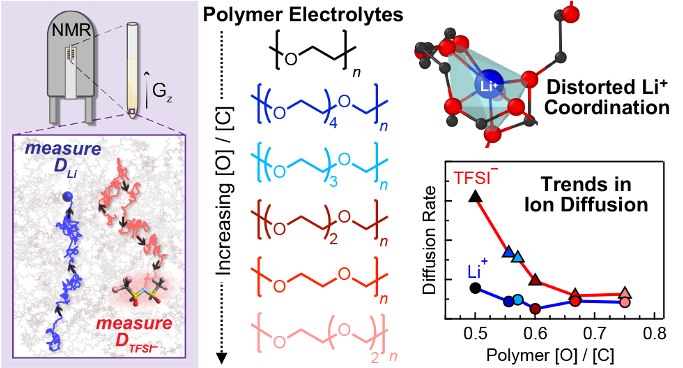
Understanding and enhancing ion transport in a systematic series of polyacetal electrolytes
Polyacetal electrolytes can electrochemically outperform the well-established poly(ethylene oxide) systems used in Li-ion batteries. In this work, we employ a suite of experimental and theoretical techniques to reveal the underlying molecular interactions between cations, anions and the polyacetal host that lead to improved electrochemical efficacy. Read More
-

A Comparative Study of Organic Radical Cation Stability and Coulombic Efficiency for Nonaqueous Redox Flow Battery Applications
The charged forms of high oxidation potential posolytes exhibited either self-discharge or a combination of self-discharge and molecular degradation, limiting CE and/or cycle lifetime in the galvanostatic cycling, presenting a challenge of utilizing high potential compounds in nonaqueous RFBs. Read More
-
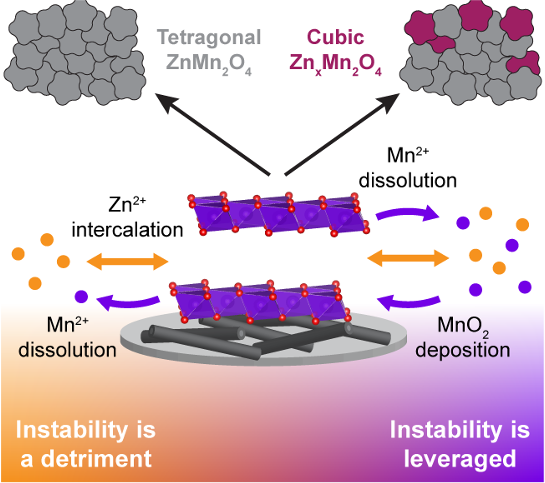
Employing the Dynamics of the Electrochemical Interface at Aqueous Zinc-Ion Battery Cathode
This report illustrates how dissolution, once seen as a fundamental drawback for MnO2 cathodes, can fortify capacity in AZIBs and provides guidance for expanding this concept and developing other systems that can reversibly deposit and dissolve the active material in a dynamic manner. Read More
-
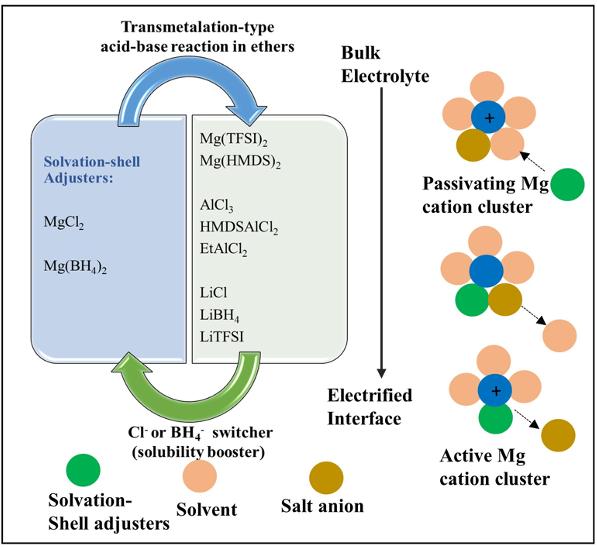
Understanding of electrolyte solution chemistry and interface electrochemistry of divalent metal batteries
This review discusses the design of electrolytes that involve different solvation structures related, in particular, the choice of anionic species. It focuses on the dynamic interplay of these electrolytes with interfaces as well as the electrochemistry of divalent metal anodes. Read More
Latest Updates
-
You’re Invited - JCESR and Beyond: Translating the Basic Science of Batteries
Please join us at Argonne National Laboratory on Tuesday, April 4, 2023 for JCESR and Beyond: Translating the Basic Science of Batteries. Registration is now open. This in-person event will celebrate 10 years of research from the Joint Center… Read More
-
A Message from JCESR: In Memory of George Crabtree
It is with heavy hearts that we say goodbye to George Crabtree, a Senior Scientist and Distinguished Fellow at Argonne National Laboratory, and Director of the Joint Center for Energy Storage Research (JCESR), who passed away unexpectedly on January 23. Dr. Read More
-
Cyanopyridines As Extremely Low-Reduction-Potential Anolytes for Nonaqueous Redox Flow Batteries
Discovery of a cyanophenylpyridine derivative with a very low reduction potential and good stability during cycling. Read More
-
Characterizing Redoxmer – Electrode Kinetics Using a SECM-Based Spot Analysis Method
Identified asymmetries in electron transfer (ET) kinetics between the reduction and oxidation of ferrocene-based redoxmers by measuring the ET rate constants (kf/kb) as a function of electrode potential. Read More
-
Benzotriazoles as Low Potential Anolytes for Non-Aqueous Redox Flow Batteries
We developed an easy-to-synthesize benzotriazole-based anolyte with a high energy redox potential (-2.3 V vs Fc/Fc+) and high solubility that demonstrates stable electrochemical cycling performance. Read More

